Compared: 2022 Honda CR-V Hybrid vs. 2022 Toyota RAV4 Hybrid
Family- and fuel-friendly, these hybrid compact crossovers are among the best in their class, but which one is best for you?
 Honda/Toyota
Honda/Toyota
Article QuickTakes
The 2022 Toyota RAV4 and Honda CR-V are the best selling SUVs in the compact-crossover class and in their automakers’ lineups, and both offer hybrid powertrains that provide impressive EPA numbers. Picking between these two utility vehicles isn’t easy, but a quick comparison of their pricing, fuel consumption, and interiors may help you make an informed decision.
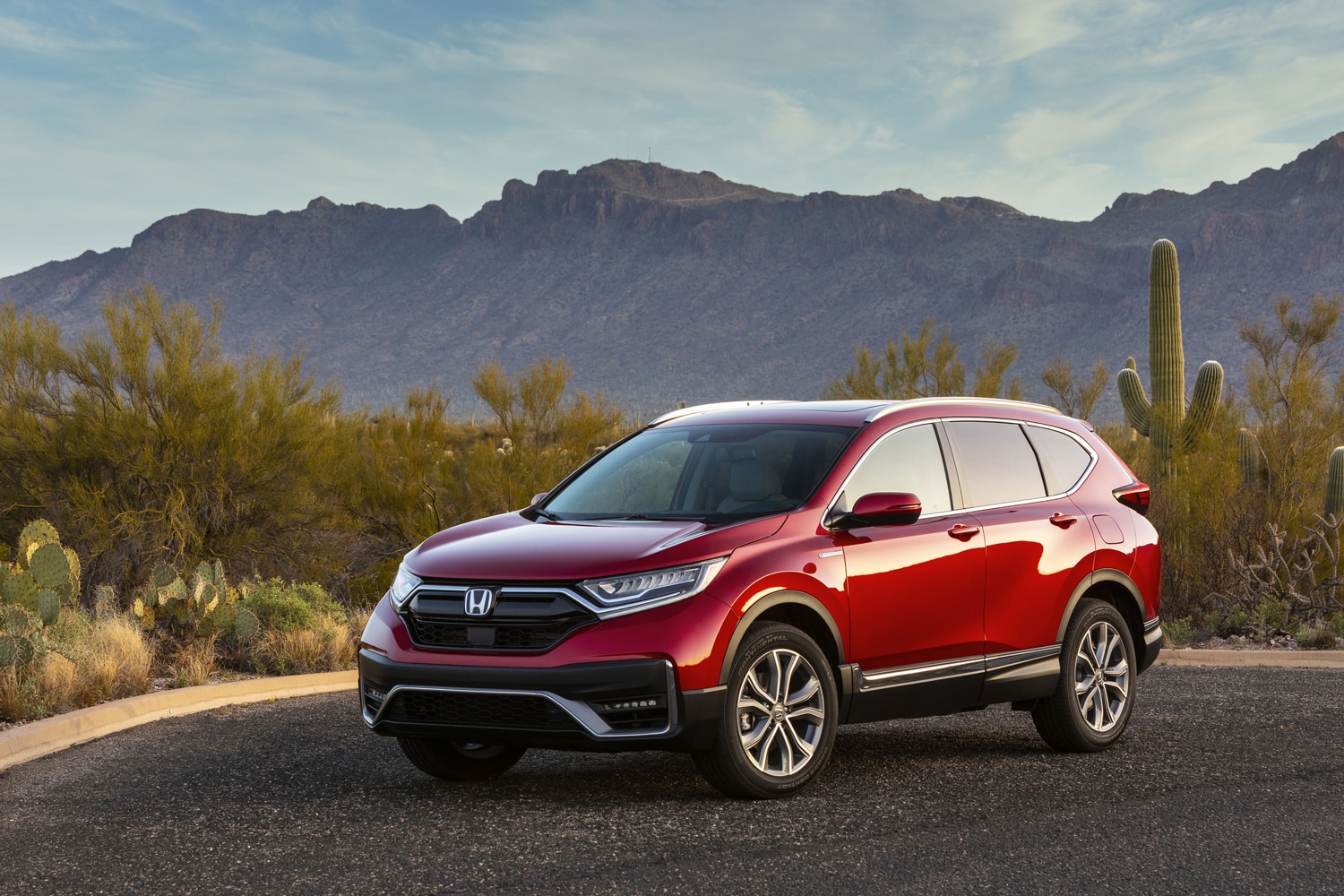 Honda
Honda
Honda CR-V Hybrid vs Toyota RAV4 Hybrid: Pricing
Honda offers just three trim levels of the CR-V Hybrid. The EX model starts at $32,835, the $35,425 EX-L adds leather-trimmed seats (among other features), and the fully loaded Touring costs at least $38,675.
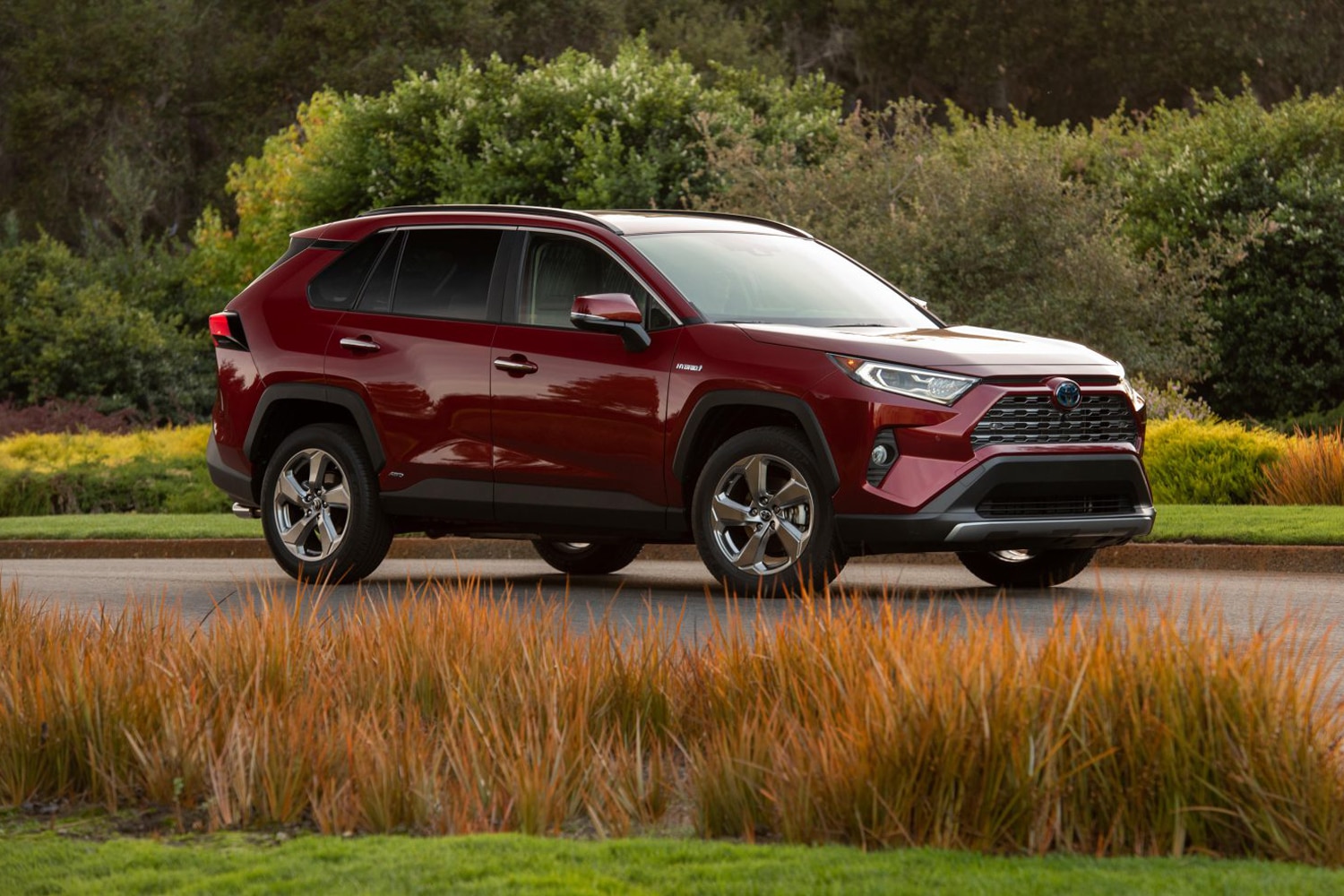 Toyota
Toyota
There are twice as many choices for the RAV4 Hybrid, whose base trim, the $30,290 LE, starts $2545 below Honda’s entry-level model. The next-step-up XLE begins at $31,760, while Premium models have a base price of $34,650. Shoppers can also opt for the sport-suspension-equipped SE and XSE, which open at $32,945 and $36,270, respectively. The top-of-the-line Limited will set you back $38,790 or more.
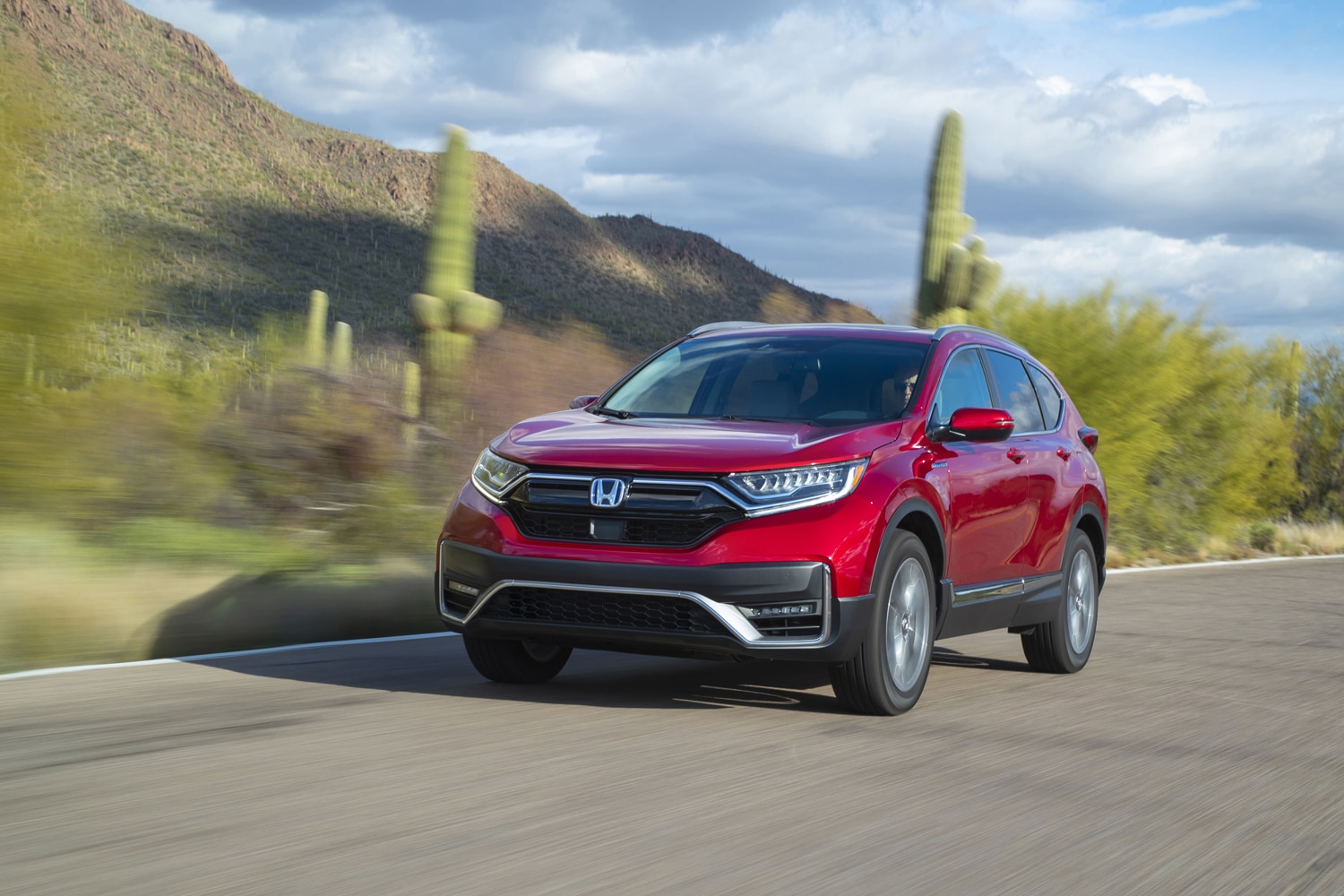 Honda
Honda
Honda CR-V Hybrid vs Toyota RAV4 Hybrid: Fuel Economy
Every CR-V Hybrid and RAV4 Hybrid features all-wheel drive. The Honda falls short of the Toyota’s power and fuel economy. It uses a dual-motor-enhanced 2.0-liter engine to make 212 ponies, and it returns 40 mpg in the city, 35 mpg on the highway, and 38 mpg combined.
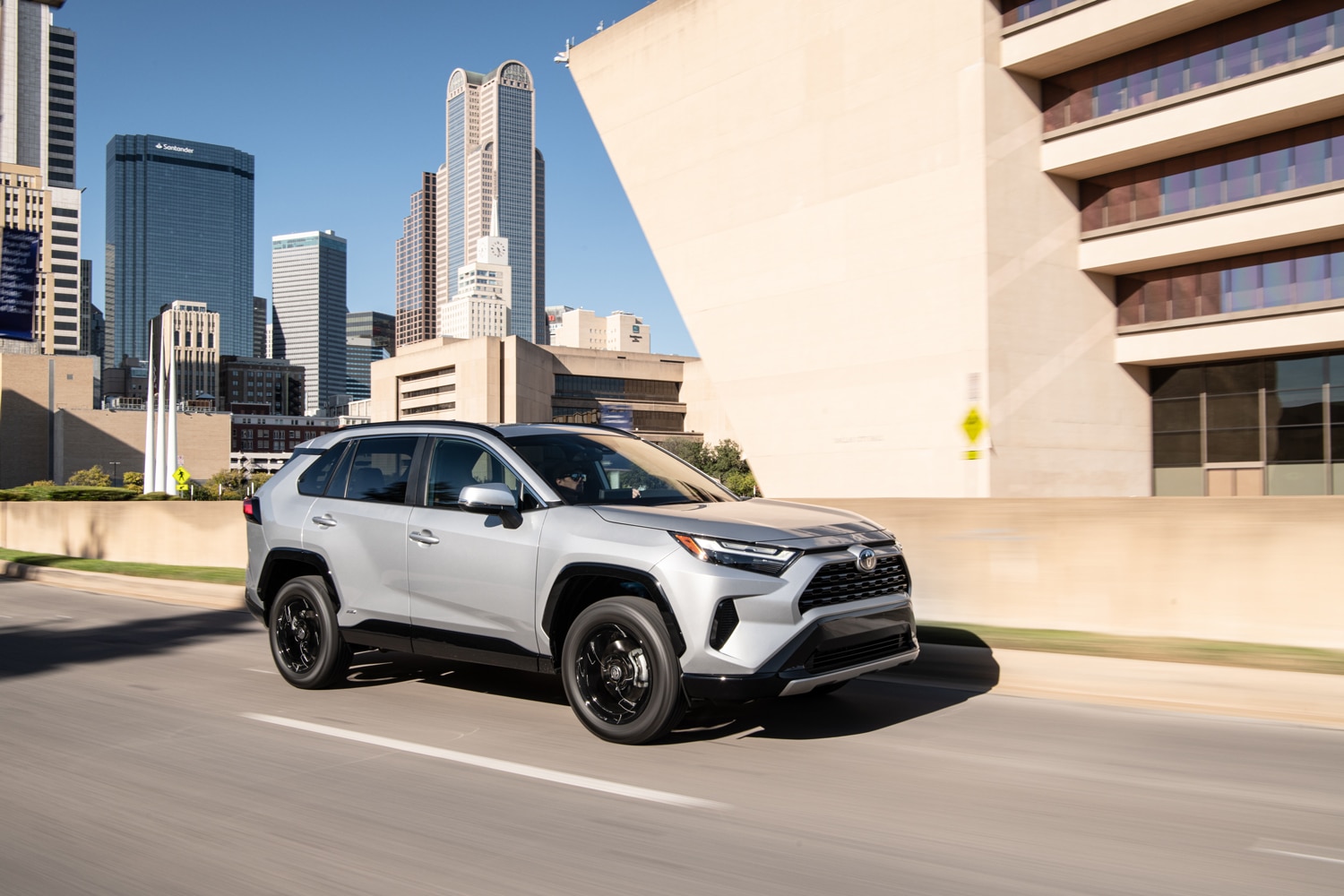 Toyota
Toyota
The Toyota combines a 2.5-liter four-cylinder engine with two electric motors to deliver 219 combined horsepower as well as 41 mpg in city driving conditions, 38 mpg in highway settings, and 40 mpg combined, per the EPA’s estimates.
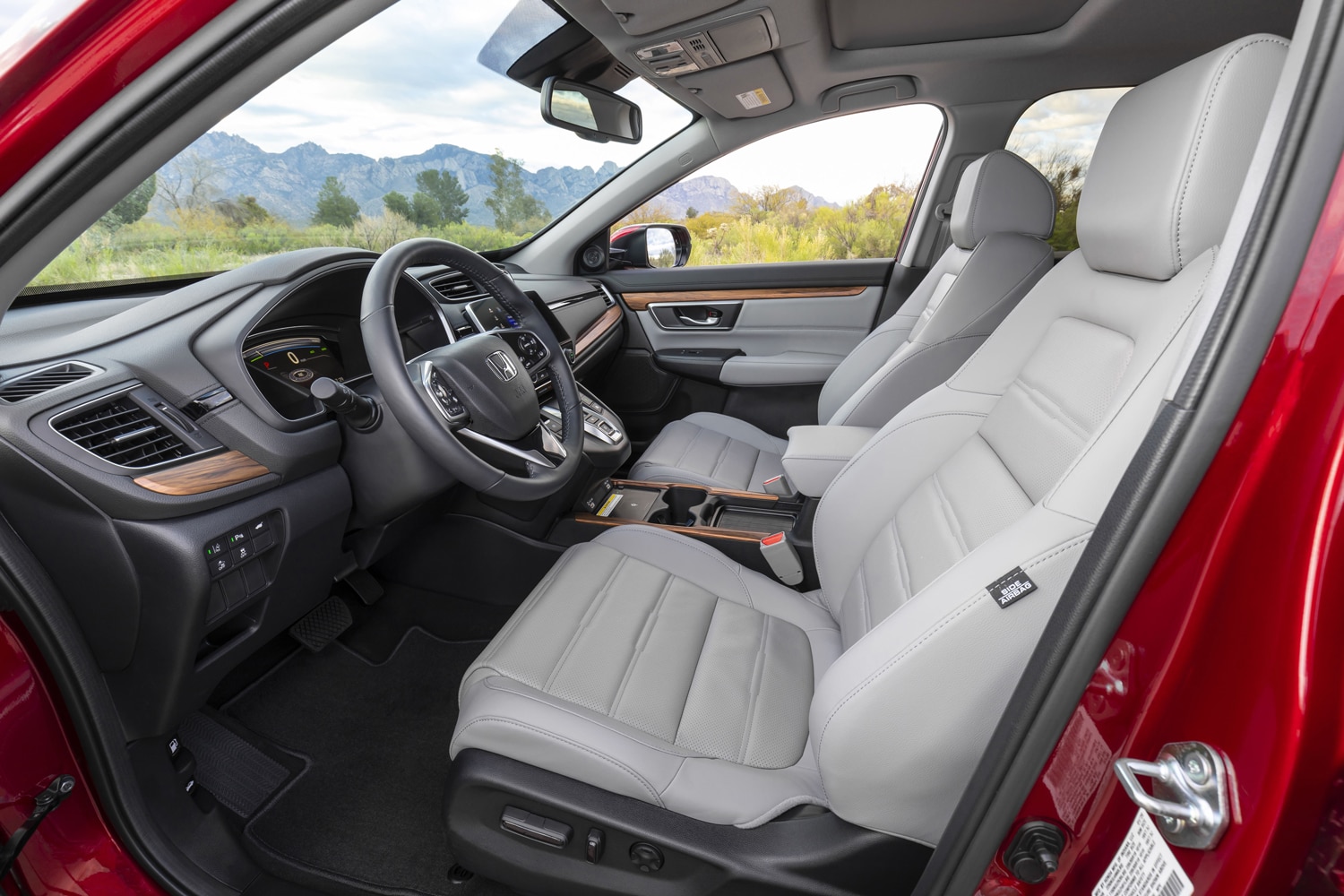 Honda
Honda
Honda CR-V Hybrid vs Toyota RAV4 Hybrid: Interior
If a roomy cabin is what you’re after, the CR-V Hybrid, with 103 cubic feet of passenger space, will likely impress you more than the RAV4, which offers 99. Tall riders forced to sit in the back will appreciate the extra 2.6 inches of legroom the Honda has over the Toyota. However, the RAV4 counters with a larger cargo hold, measuring in at 38 cubic feet behind the rear seats; CR-V buyers get 33. Fold down those seats and the difference narrows, with the RAV4 offering 70 cubes to the CR-V’s 69.
 Toyota
Toyota
The equipment lists are similar. Both vehicles come with dual-zone climate control in addition to Android Auto and Apple CarPlay support. The CR-V has a few more niceties at the entry level, including heated front seats and a power-adjustable driver’s seat with memory settings. Shoppers can find a heated steering wheel, a wireless phone charger, leather upholstery, and a powered liftgate on higher trim levels of both models (albeit sometimes as options). If you insist on ventilated seats, you’ll want to look at the top-tier RAV4 Hybrid, as lesser models and CR-V Hybrids don’t offer them.



